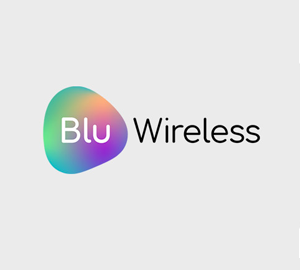Fixed Wireless Access (FWA) is a new frontier for wireless broadband services and the provision of high performance 5G. FWA uses mmWave technology to provide high speed data transfer with the potential to revolutionise how we use broadband technology and support the future.
However, licensed spectrums have been leading the way in connectivity so far and they won’t disappear anytime soon. Instead, 5G networks will rely on both unlicensed and licensed networks to provide seamless connections for the public and industry applications.
What is the difference between the licensed and unlicensed spectrums?
The connections for FWA work within the radio spectrum which has various frequency bands that can be harnessed. Therefore, the primary difference between the licensed and unlicensed spectrums is that they access different frequency bands in the spectrum. While the low frequency licensed bands require access authorisation, the high frequency licensed exempt band can be accessed by anyone at no cost.
5G is powered by a combination of these two spectrums, with 5G mmWave (30 to 300 GHz) and 5G NR (26 and 28GHz). By using both spectrums 5G capabilities have more flexibility and additional frequencies to meet the growing demands of connectivity. The higher frequencies can accommodate more robust backhaul, higher quality, and faster speeds than low-frequency spectrums. However, lower frequency spectrums have their own benefits, such as longer range.
How are the licensed and licensed exempt spectrums currently used?
With these differences in mind, there is always a trade-off when using either spectrum. With licensed bands, companies are paying for exclusivity, which guarantees no interference and a reliable connection. This is why licensed spectrums are often used by television broadcasters, so they don’t restrict each other’s transmissions.
However, for wireless technologies, such as home devices and Wi-Fi, using a licensed band would be extremely impractical, not to mention expensive. These kinds of connections use the mmWave spectrum which makes for easy and public access to connectivity but can sometimes carry the risk of interference with several devices using the same signal.
The licensed spectrum has more immediate benefits for 4G usage; network congestion is eliminated, reliable connections are guaranteed, and it enables internet for remote areas. Despite this, when mmWave frequencies are handled correctly, they have the potential to offer more impressive wireless services for significantly less cost. In fact, innovative technology companies are choosing the mmWave band combined with wireless transmitters to enable the ultrafast gigabit data rates promised by 5G.
How will the licensed and licensed exempt spectrums work together to enable 5G implementation?
Despite their differences, mmWave and licensed bands will both be necessary for the implementation of universal 5G. When used in collaboration, these spectrums can in fact complement each other for the improvement of 5G connectivity.
While the licensed spectrum can provide reliable, high-bandwidth and long-range connections, portions of it are in short supply. Therefore, to provide connectivity that will power large-scale projects such as smart cities, high-speed transport, and FWA for multi-home broadband, it is necessary to use a wider range of frequencies. This can instead be achieved using dynamic scheduling and sharing in the licensed exempt band which enables the use of a large range of frequencies while ensuring interference is at a minimum.
mmWave spectrums have a use case for short-range applications where small cells can be deployed within a specific area. This can be used in areas without fibre connections, where high-speed backhaul is essential and when multiple devices are being used daily. For example, FWA using mmWave for company buildings, building-to-building within cities and housing communities will provide much stronger connections than those provided by the licensed spectrum.
This is why FWA is seen as the key technology for connecting the last mile, enabling connectivity for the end-user as well as providers. On the other hand, the licensed spectrum will be more effective for large-scale use cases such as utility providers or television broadcasters because they require higher-bandwidths and independent signals.
Therefore, the two spectrums will need be used in tandem to share the load of total connectivity and ensure that networks across cities and countries are consistent and reliable.
What does this mean for 4G vs 5G?
5G NR and mmWave will be implemented by building upon the network already in existence for 4G. In particular, the infrastructure built for 4G networks, such as cell towers, can be maintained and repurposed using software upgrades to support 5G. This not only makes use of valuable equipment, but also significantly reduces costs for 5G deployment.
For mmWave technology, some additional hardware needs to be created and installed. These modules and small cells can still be attached to existing infrastructure and will make use of software to improve upon 4G service. This includes lower latency, better backhaul, increased device capacity, dynamic scheduling, and faster data transfer to name a few.
Programmable communication modules can be tailored to purpose and installed within certain distances to provide reliable, fast, and more consistent connectivity. When 5G mmWave is harnessed with these innovative software solutions they can be applied into large scale projects that licensed waves alone can’t support.
Using Blu Wireless FWA mmWave technology – which has no cables, is easy to install and safeguards against interference – you can power smart cities, seamless high-speed transport connectivity, and unbeatable broadband connections for homes, businesses, and hospitals.
Blu Wireless are leading the way towards a fully connected society. Get in touch to find out how we can support your connectivity project.









